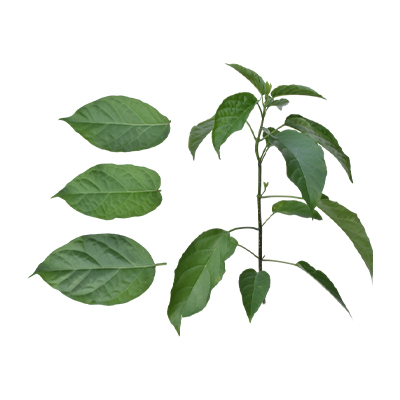Glory Bower
Clerodendrum minahassae Teijsm.& Binn.
Lamiaceae
Location in our garden
Principal



Synonym
Habitus
Shrubs. An evergreen perennial flowering shrub or small tree that can grow from 1 to 6 m tall
Part Used
Leaves
Growing Requirements
Full Sunshine
Need Shade
Habitat
Forest
Overview
Grows as a wild uncultivated plant, Leilem plays an important role in the diet of indigenous people of Minahasa and Manado, North Sulawesi, Indonesia. Native to South-East Asia, its natural range extending from Singapore to Indonesia and the Philippines. The leaves of Leilem have long been used as vegetable and culinary herb in many kinds of meat recipes. Besides giving a pleasant flavour, Leilem leaves are believed to contain natural antioxidants capable of counteracting the bad effects of animal fats for health.
Vernacular Names
Bagauak-na-puti (Tagalog-Philippines).
Agroecology
It can be found in many habitats ranging from mangrove, salt marshes and beach forest through grassland thickets up to cloud forest, on soils ranging from saline soils with up to 6.4% salinity, sand dunes to limestone formations. It can be grown in full sun or shade in any well-drained, friable soil, however, it is most abundant at lower elevations.
Morphology
- Stems - soft-wooded and covered with light grey bark that is either smooth or with raised wart-like pores.
- Leaves - large, oval, glossy green and deeply veined, oblong to elliptic-oblong, 11-18 cm in length, and 5-9 cm wide, with pointed tips and rounded base, and somewhat entire or slightly toothed margins. Leaf stalks are 4-10 cm long.
- Flowers - fragrant, long, thin white tubes borne in showy clusters. Each flower is set in a green calyx that swells after the flower falls, becoming fleshy, brilliant red and then unfolds into a star-shape with a small, round, blue marble-like fruit set in the centre.
- Fruits - fleshy, blue, somewhat rounded, and about 1 cm in diameter. Calyx in the fruit is thickened, red or purple, split in five, 2.5-3 cm long lobes, and spreading when the fruit is mature.
- Seeds - exalbuminous, green, and fleshy.
Cultivation
Propagated by seeds, softwood and semi-ripe cuttings, root cuttings or simply by rooted suckers.
Chemical Constituents
Alkaloids, saponins, flavonoids, steroids, terpenoids, and phenols.
Traditional Medicinal Uses
- Studies have suggested antioxidant, anti-anemic, antihyperlipidemic, antiatherosclerotic properties.
- In the Philippines, plant is used as an external remedy for chest and stomach complaints.
- Leaves are boiled and applied to carbuncles.
Part Used
Reference Sources
- Iplantz. (No date). Useful plants for warm climates. Clerodendrum minahassae. https://www.iplantz.com/plant/439/clerodendrum-minahassae/. 11-02-2021.
- Kairupan, C.F.; Mantiri, F.R.; Rumende, R.R.H. (2019). Phytochemical Screening and Antioxidant Activity of Ethanol Extract of Leilem (Clerodendrum minahassae Teijsm. & Binn) as an Antihyperlipidemic and Antiatherosclerotic Agent. IOP Conference Series: Earth and Environmental Science, Vol.217 012016.doi:10.1088/1755-1315/217/1/012016. https://iopscience.iop.org/article/10.1088/1755-1315/217/1/012016/pdf 11-02-2021.
- StuartXChange. (2020). Philippines Medicinal Plants. Bagauak-na-puti. http://www.stuartxchange.com/Bagauak-na-puti 11-02-2021.
